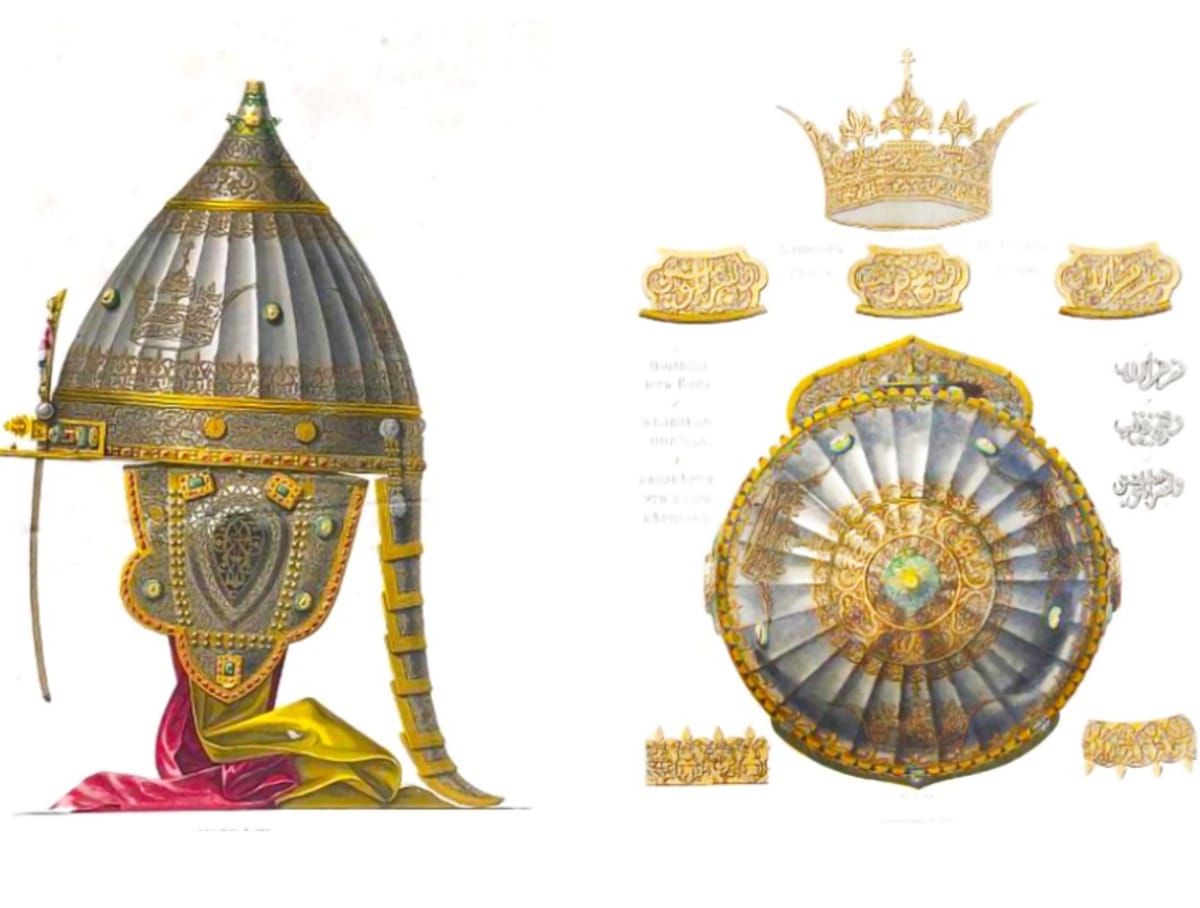In October 2024, a claim began to circulate on social networks that a saying from the Koran was inscribed on a helmet that belonged to a Russian commander. According to Internet users, this proves the prince’s close connection with Islam. We decided to check the reliability of such publications.
At the beginning of October in Tatarstan passed forum “Theological heritage of Muslims in Russia”. In particular, Hieromonk Grigory Matrusov, Chairman of the Expert Council under the Patriarch of Moscow and All Rus' for interaction with the Islamic world, spoke at it. Here is a fragment of his speech, available online: “The Kremlin keeps the helmet of Alexander Nevsky, on which is written a verse of the Holy Quran, which means “Victory is from God, and success is near, and bring joy to the believer.” And for me it is not at all surprising that this verse of the Holy Koran was engraved on the helmet of a Russian Orthodox Christian. Alexander Nevsky had a special relationship with the Islamic world. <…> He visited the headquarters of the Golden Horde Khan more than once. <…> He was friends with the son of the great khan Bati Khan, with Sartak, but it was not only because of friendship that he had this inscription.” Then Grigory Matrusov began to talk about the common features of Islam and Christianity, primarily about the monotheistic nature of the two religions.
On October 13, a video of the monk’s performance was shared by the Telegram channel of a volunteer detachment fighting in Ukraine as part of the Russian army “Nevsky"(308,000 views at the time of writing this analysis). Then the recording was reposted by the commander of the Chechen special forces “Akhmat” and the deputy head of the military-political department of the Russian Ministry of Defense Apti Alaudinov (109,000). Also, channels such as “Sheikh Tamir" (141,000) and "Dmitry Vasilets"(142,000; post was later deleted).
By the “helmet of Alexander Nevsky” kept in the Kremlin, Hieromonk Grigory Matrusov obviously meant the helmet included in the collection of the Armory Chamber. Indeed, a fragment of the 13th verse of the 61st sura of the Koran “al-Saff” is engraved on it: “Help from Allah and victory is imminent. And give joy to the believers!” (translation by I. Krachkovsky).
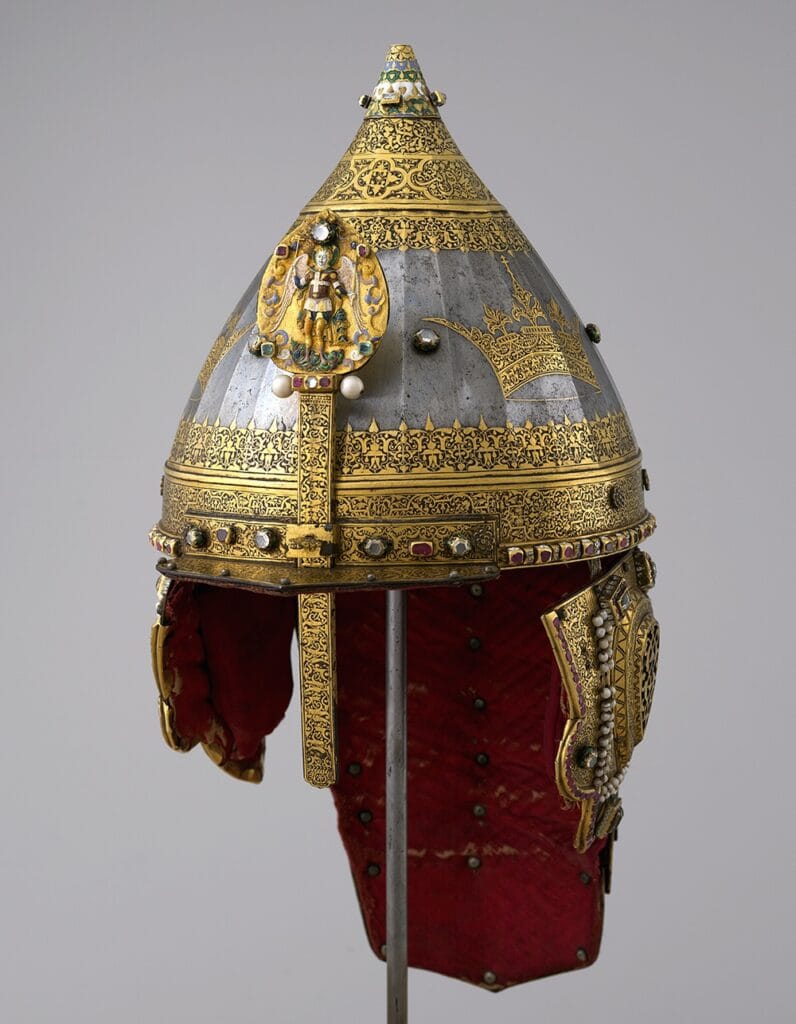
This helmet began to be associated with Alexander Nevsky only in the 19th century. In 1826, writer Pavel Svinin made up inventory of items stored in the Armory. Among the memorable values he mentioned and this military headdress: “Helmet of St. Alexander Nevsky, an oriental model, made of smooth steel, with an icon of St. Mikhail." Svinin was neither a historian nor an art critic, and his excessive patriotic fervor and implausibility of historical hypotheses often ridiculed contemporaries.
However, he was not the only one who put forward the version that the helmet belonged to Alexander Nevsky. About this wrote and academician Alexei Olenin, who believed that the helmet was given to the prince during one of his trips to the Horde. Under the direction of Olenin, artist Fyodor Solntsev drew helmet without missing the smallest details. In 1849-1853, this drawing was included in a publication entitled “Antiquities of the Russian State.” The captions for the chromolithographs were written by the director of the Armory Chamber, Alexander Veltman, who also indicated that this headdress belonged to Alexander Nevsky.
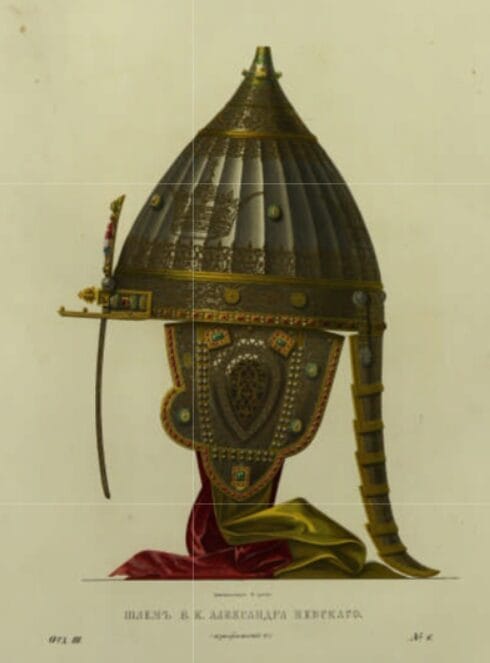
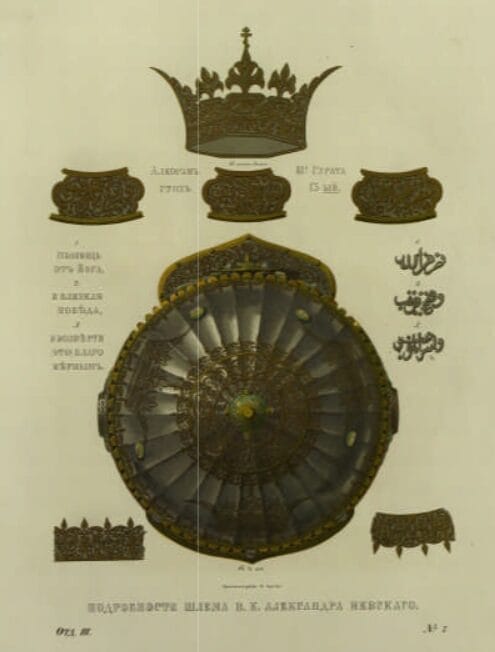
Subsequently, the legend firmly established itself at the highest level: in 1882, the helmet took a place on the Great State Emblem of the Russian Empire
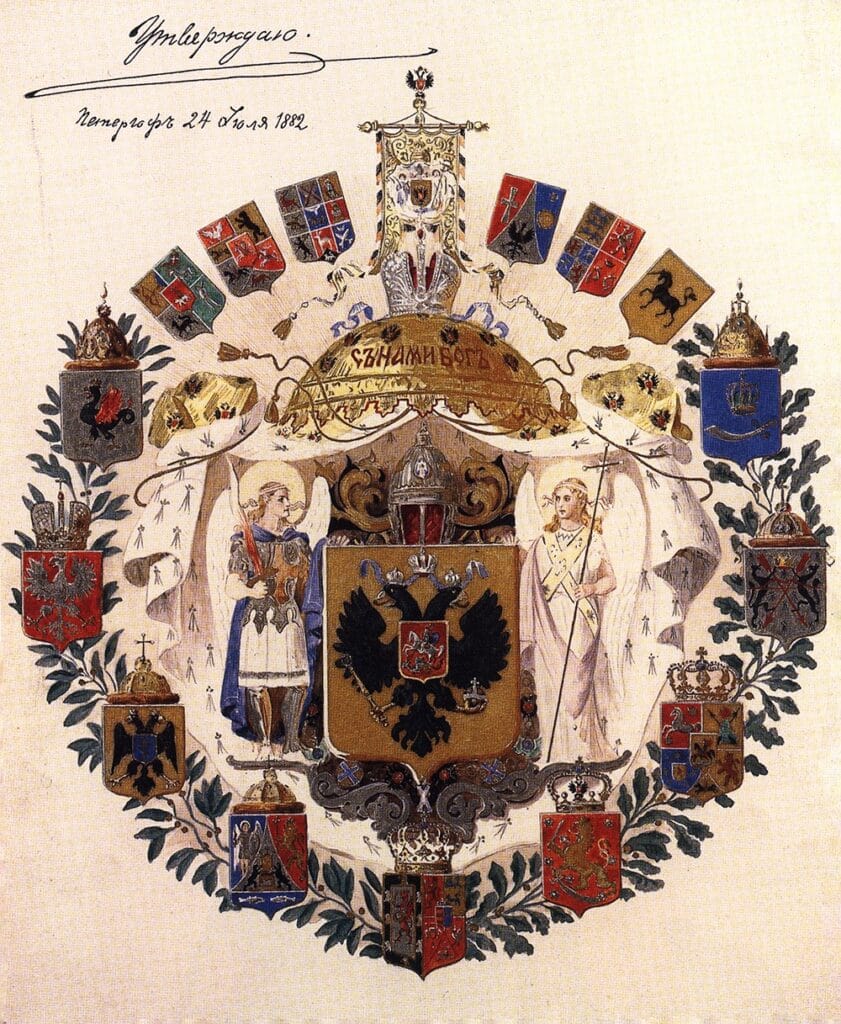
However, historical documents describe the origin of this item differently. IN rank books Tsars Mikhail Fedorovich and Alexei Mikhailovich noted that in December 1621, gunsmith Nikita Davydov was awarded for “making the sovereign’s hat for the Jericho cause.” There is also a description of the “Jericho hat” itself: “The Jericho hat of red iron by Mikitin, made by Davydov; the crown and on top of the crown another crown and the underside, and the shelf, and the back of the head are set in gold, the grass, and in the middle of the crown, the crown is set in gold, and in the shelf and in the crown there are six silver studs gilded.” The description, which takes up more than one page, completely coincides with the helmet preserved in the Armory.
By the middle of the 20th century, specialists came to the conclusion, that the helmet (in the form in which it has reached our time) was made no later than 1621. Its base is older, but was made no earlier than the 16th century, that is, more than a century after the death of Alexander Nevsky in 1263. Apparently, the Russian gunsmith took an oriental helmet (according to various versions, the military gear came from Persia or the Ottoman Empire) and remade it for Mikhail Fedorovich. This explains the inscription in Arabic. And now the helmet is in the Armory exhibited like the “hat of Jericho” by Mikhail Fedorovich.
Thus, the helmet has nothing to do with Alexander Nevsky and his time, and as the helmet of the Grand Duke, it was attributed with the light hand of the writer Svinin.
As for the statements about Alexander Nevsky’s relations with Muslims, there are other factual errors in the speech of Hieromonk Grigory Matrusov. Thus, in his speech, the head of the Expert Council for Interaction with the Islamic World said that one of the reasons why the Grand Duke received a helmet with a saying from the Koran was friendship with Batu’s son Sartak. Firstly, this myth, set out, in particular, by Lev Gumilyov in the book “Ancient Rus' and the Great Steppe", is not confirmed in historical sources. And secondly, Sartak was known outside the Horde primarily as a Christian. In 1253, Guillaume de Rubruck, monk and traveler, went to Sartak with a message from the French king Louis IX, who hoped to establish contact with his co-religionist. De Rubruk, however, was disappointed - Sartak did not accept the message, and the monk suggested that the khan’s son was not guided by questions of faith, but solely by pragmatic considerations: “I don’t know whether he believes in Christ or not. I only know that he does not want to be called a Christian, but rather, it seems to me, he ridicules Christians. It is he who lives on the path of the Christians <...>, who all pass through his region when they go to his father’s court, bringing him gifts; hence he values Christians all the more. However, if the Saracens had come and brought more, they would have been sent sooner.” Therefore, it is not entirely clear why exactly Sartak could, according to Matrusov, introduce Alexander Nevsky to Islam.
Cover photo: Antiquities of the Russian State, published by the Highest Command, 1853. Presidential Library
Read on topic:
If you find a spelling or grammatical error, please let us know by highlighting the error text and clicking Ctrl+Enter.


